I Witness Silwan: Public Art, Tourism, and International Solidarity in Palestinian East Jerusalem
by Susan Greene

Murals of eyes, scattered across the hills of Batn al Hawa, can be seen from miles away, including from the Israeli “heritage tourist” sites. The eyes are of local and international leaders, activists, artists, philosophers, and more.
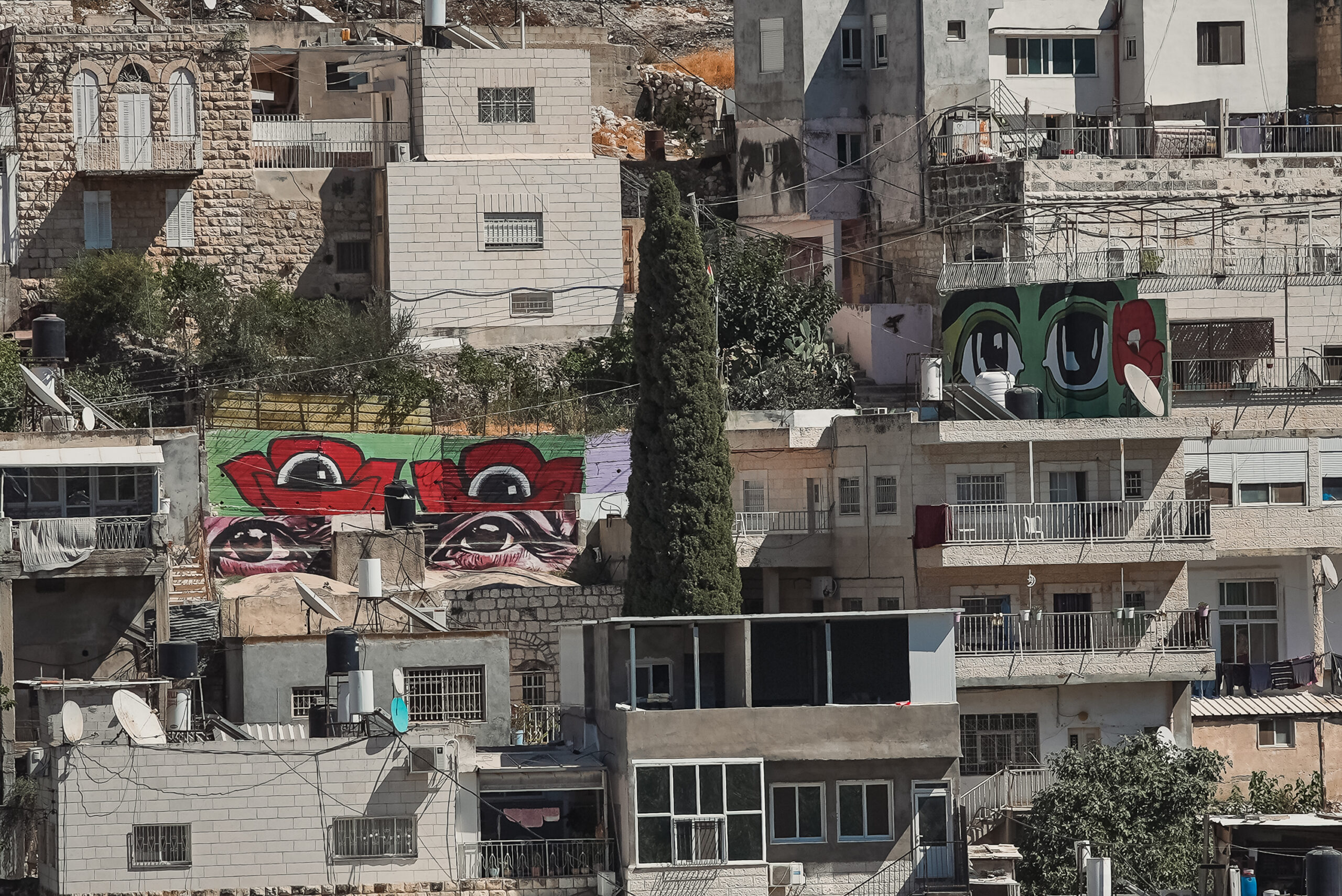
“The staring eyes say to people that we see them and they should see us too. . . . We want to say that we are here—we love our land and our home.” —Jawad Siyam, Director, Madaa-Silwan Creative Center
East Jerusalem, which includes the neighborhood of Silwan, population 55,000, has been occupied by Israel since 1967. Israel renamed Silwan “The City of David,” a Jewish heritage site that is visited by more than a million people each year. Brutal dispossession by religious settler “nonprofits” such as El-Ad and Ateret Cohanim aim to dispossess all of Silwan’s Palestinian residents to move in Jewish settlers, build up tourist centers, and conduct controversial archeological excavations.
I Witness Silwan, 2019−present, is an international public art project in support of the struggle waged by Silwan’s Palestinian residents to stay on their land. Most of I Witness Silwan’s murals are in Batn al-Hawa, one of twelve Silwan neighborhoods. More than 100 families, representing more than 700 people, are threatened in Batn al-Hawa, in addition to the families who have already been evicted. In mid-July 2024, five families, including I Witness Silwan partners, learned their appeals were denied and that the courts ruled in favor of the settlers.
For more information: Foundation for Middle East Peace

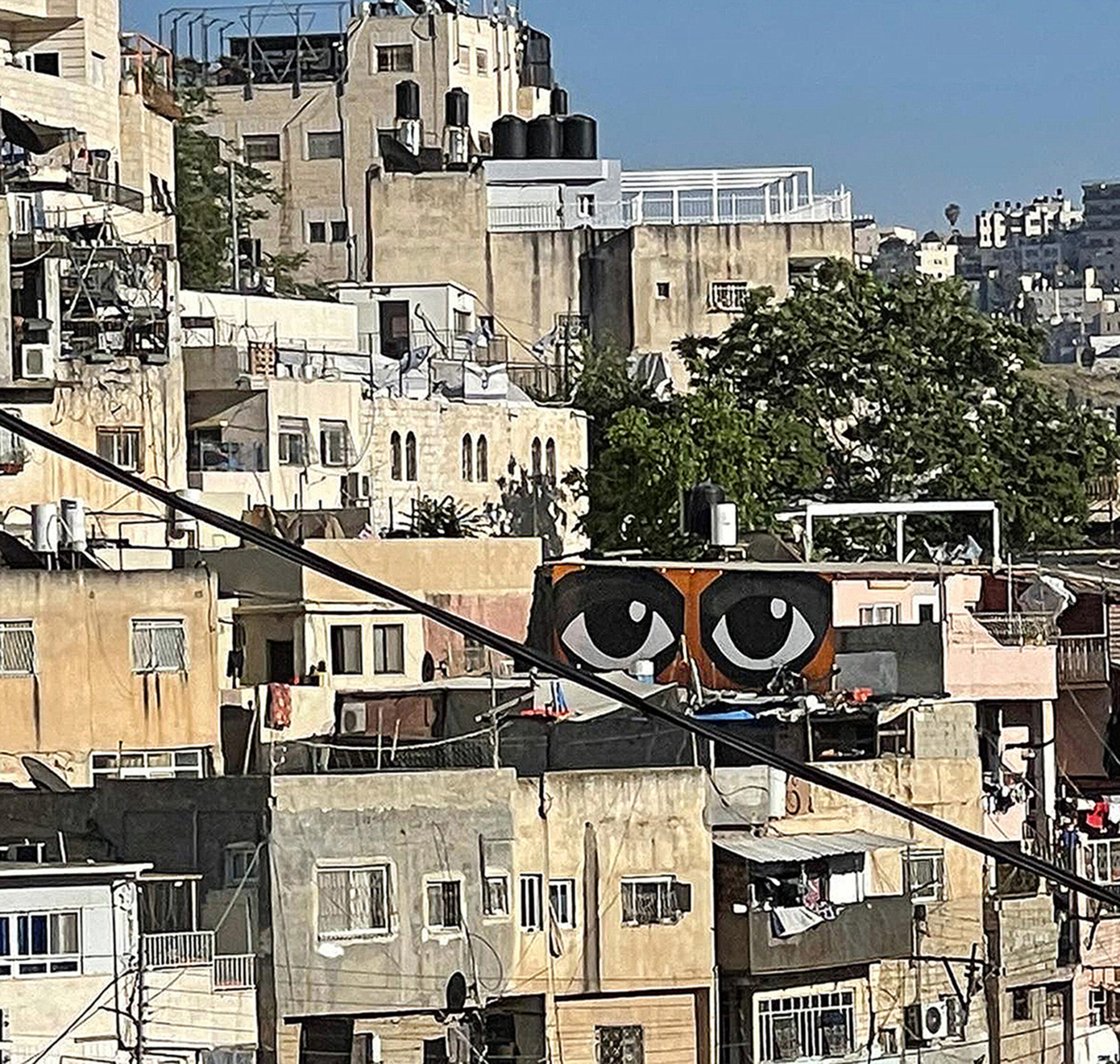
Eyad was murdered at the Lion’s Gate checkpoint in the Old City by Israeli police on May 30, 2020. Eyad and his teacher had been walking to Elwyn El-Quds center, which provides services for children and adults with disabilities.

Along with the murals depicting eyes, I Witness Silwan organizes community and youth murals led by local artists and international guest muralists containing a wide range of narratives and symbols. These murals are only visible close-up inside the neighborhood.
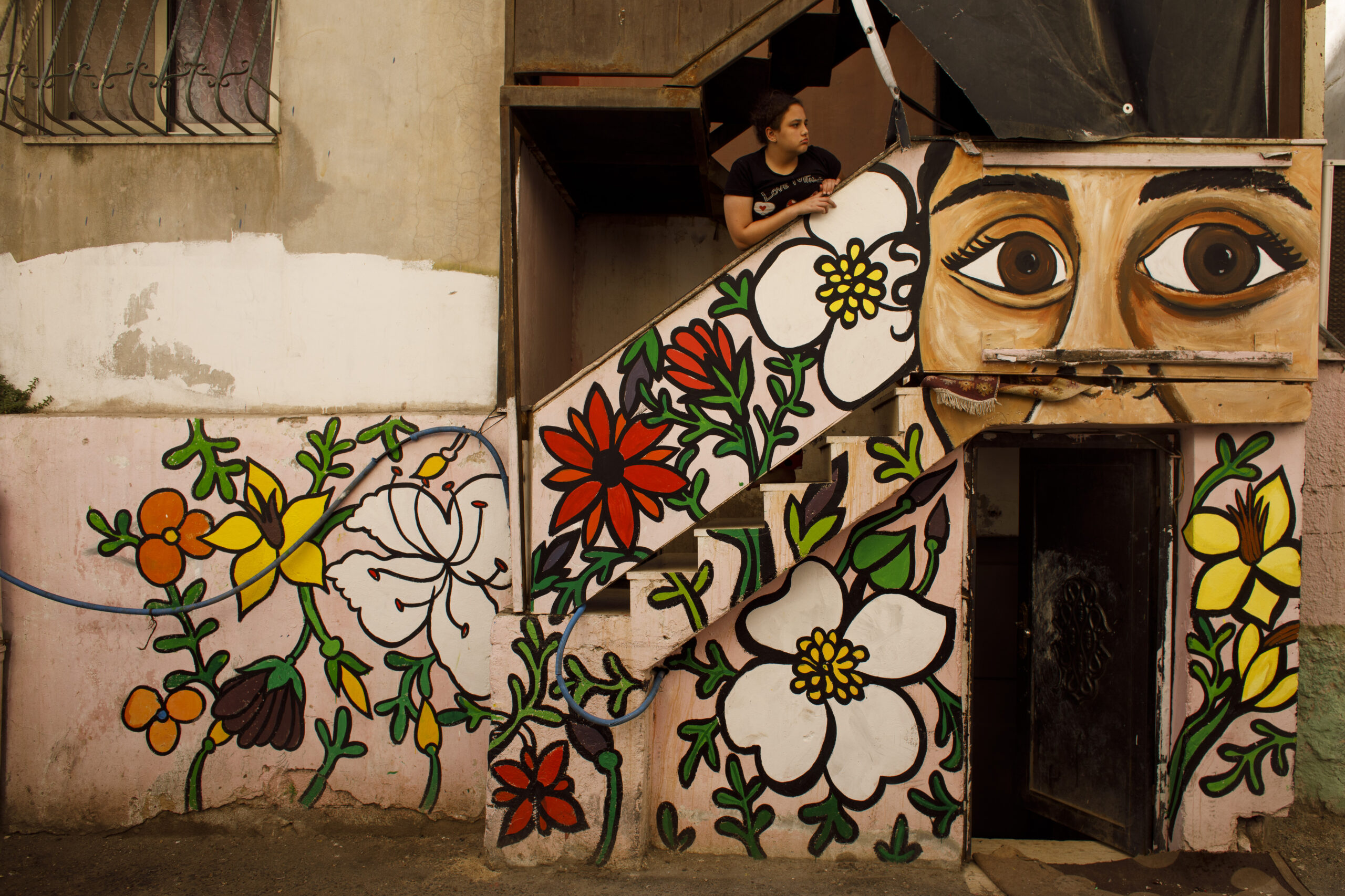

Since 2017, the Nasser Rajabi family has fought eviction orders from the Ateret Cohanim settler organization, which is backed by Israel. In July 2024, Um Nasser lost her case and is now appealing to the Israeli Supreme Court. A reversal in the decision is not expected.

“We want to keep our children away from the violence, away from the settlers and the army. We want to give them back a little bit of their childhood.”
—Zuheir Rajabi, Director, Madaa Creative Center, Batn al-Hawa Branch, Silwan
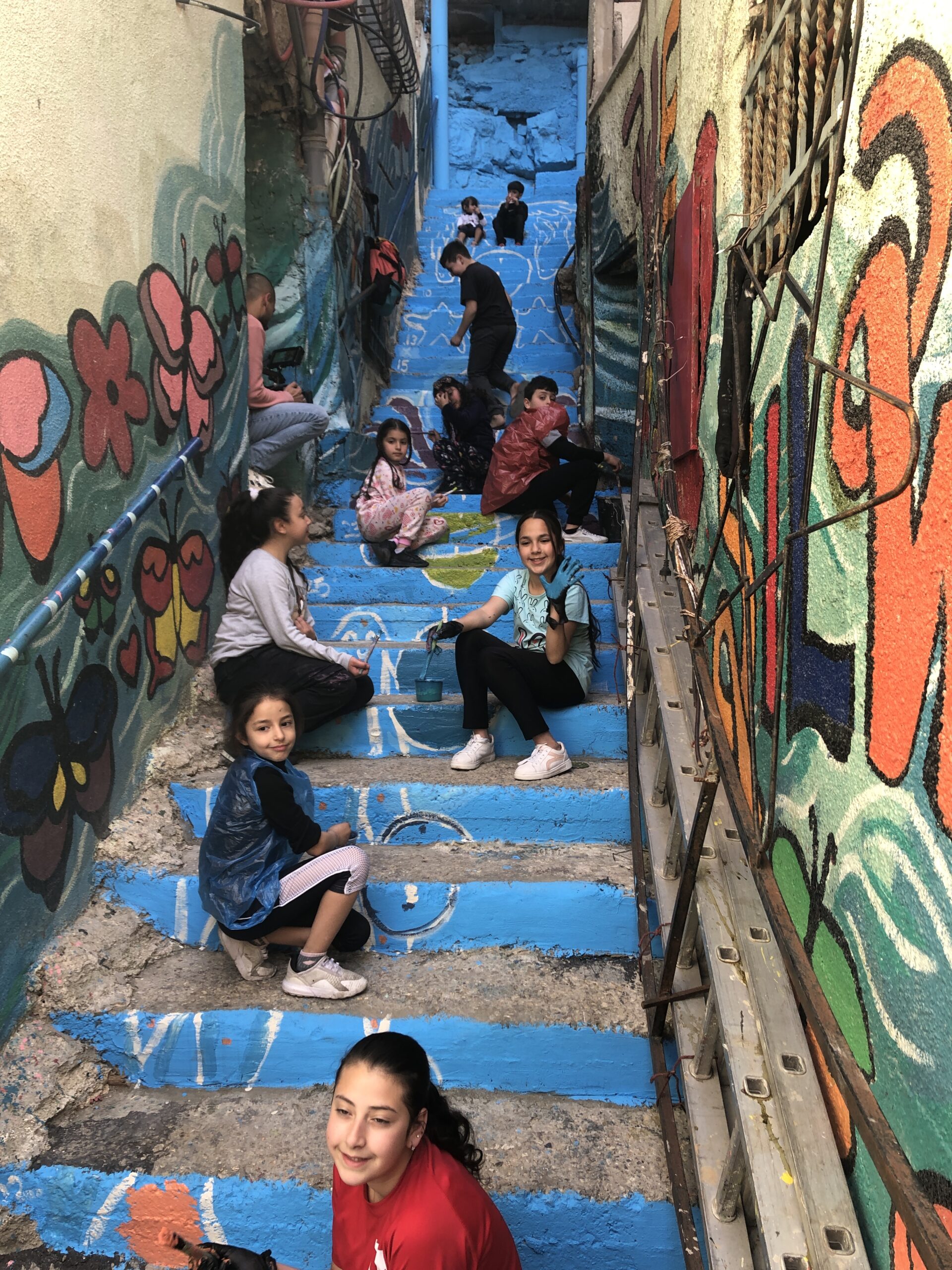

“I Witness Silwan is a project of support, steadfastness, challenge, resistance, and delivering a message to the occupier. Sometimes we are there to draw and witness the attacks of the occupation army on the people and even on us while we are drawing.”
—Jenan Maswadeh
“Among the many families facing eviction in East Jerusalem, Um Nasser Rajabi is one of the closest to me. I remember her bringing me a cup of tea and sitting next to me with tears in her eyes. I could see both sadness and strength as she talked about the recent clash near her house, her fear of tear gas being thrown at the children.
“She told me how the murals made her feel reassured and safe. These invaluable and never-ending words of support from Um Nasser and all those around us show the steadfast desire of my people to live a peaceful, normal life.”
—Manar Shreateh

I wish children didn’t die.
I wish they would be temporarily elevated
to the skies until the war ends.
Then they would return home safe,
and when their parents would ask them:
Where were you? They would say:
We were playing in the clouds.
—Ghassan Kanafani (1936−1972)

Hamed Moussa (c. 1909−2013) was a farmer from Dayr El Assad, a village in the Akka district of Palestine.
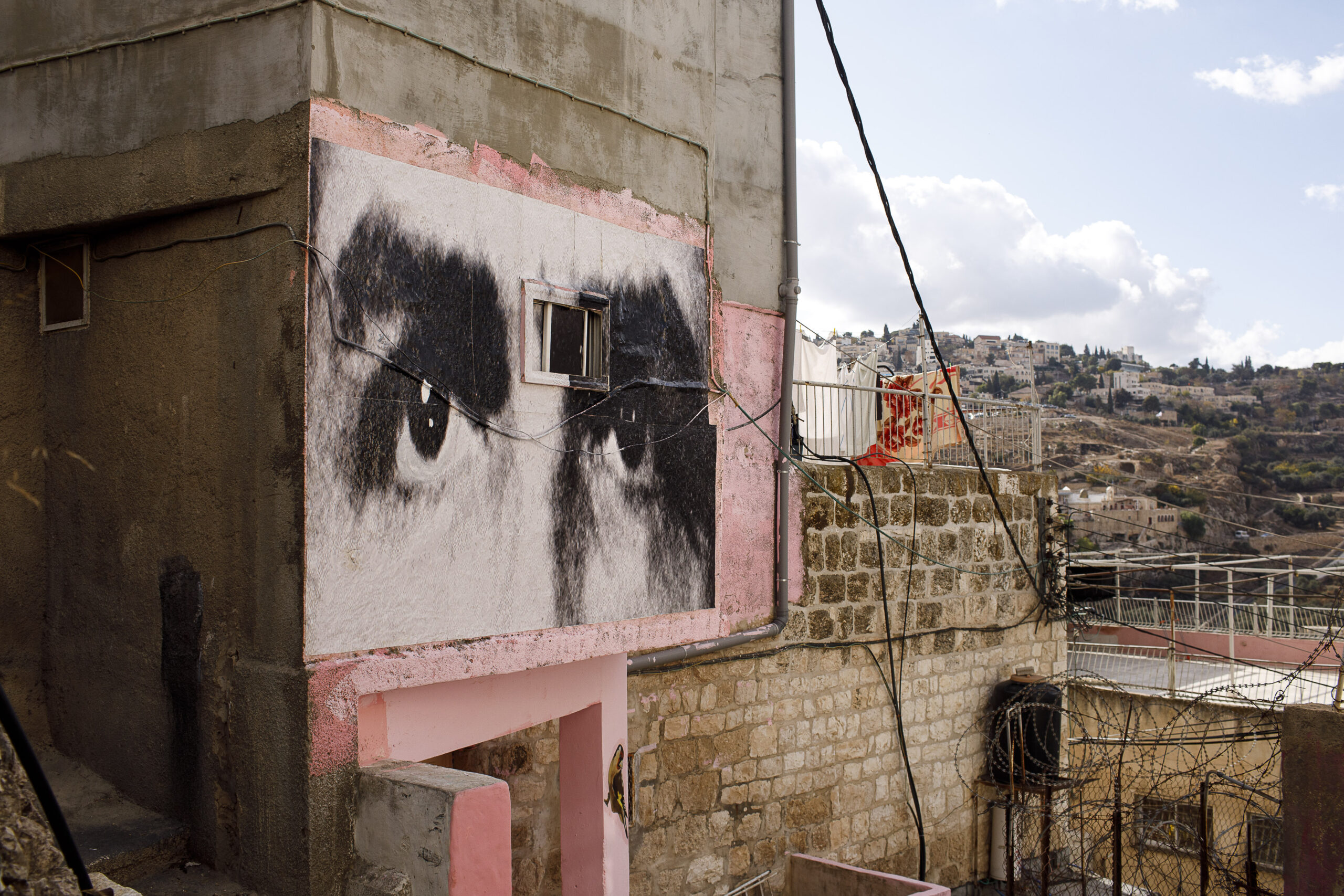
Che played an instrumental role in the 1959 Cuban Revolution and spearheaded monumental social initiatives such as the 1961 Cuban Literacy Campaign. Che made a historic visit to Gaza in 1959—an early sign that the settler-colonization of Palestine was not just a localized issue but rather part of a global struggle for liberation and repatriation.

Zuheir Rajabi was born and raised in Batn al-Hawa. He leads the residents’ council and directs the Madaa Creative Center, Batn al-Hawa branch. He installed cameras to surveil his neighborhood in 2004 after his brother was shot and injured by Israeli police. His father died shortly thereafter when Israeli military forces fired tear gas into their home. After his father’s death, Rajabi attempted to sue the police. The court said he did not have a case as there was no evidence. Mr. Rajabi responded by installing fifteen cameras to document assaults by the sovereign state against the Palestinian population in Batn al-Hawa.

Zuheir stated: “If you take a look, you can see all of the cameras that are installed [by Israeli state]. The cameras are again and again intervening in the privacy and in every single detail of the people’s lives here—which leads to further pressure on the people.” The existence and placement of the “colonial gaze”—surveillance cameras—in Silwan suggests that Israel has documentation of the same incidents of violence that Rajabi’s cameras are now capturing.
The occupation cameras are an extension of the sovereign eye; therefore the data collected does not see the occupied. With their cameras, and one might say, with the murals of eyes, Zuheir Rajabi and the Palestinians of Silwan counter the claim that what is visible is only the domain of the sovereign state.
When Zuheir Rajabi installed cameras he claimed a right he does not have in the “state of exception,” that is, Occupied Palestine—he claimed the right to look. Jacques Derrida’s phrase droit de regards can be translated as meaning either “the right to look” or “the law of the gaze.” How an event unfolds and is seen depends precisely on the politics of visual rights. The “other” is a reflection of “the look” that emerges out of what Derrida calls “the infinite asymmetry of the relation to the other, that is to say, the place for justice.”
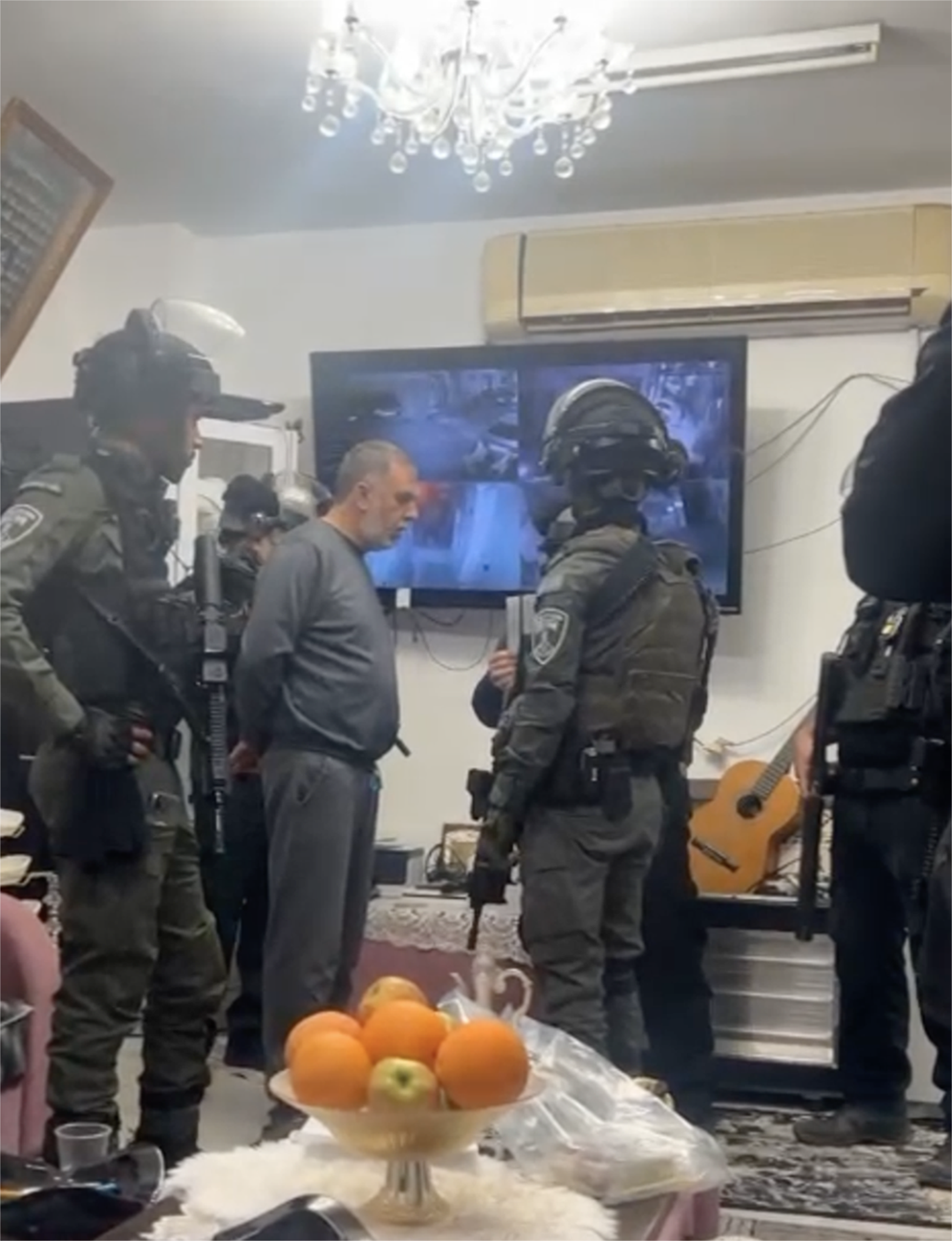
On May 3, 2024, Zuheir Rajabi wrote: “The army came to the house several times. They were looking for my son Yazan, claiming that he had assaulted the army. There was some beating involved, and they were searching for him. Hamza, my other son, was taken to the police station and his detention was extended for five days. Then they asked me to also go for investigation, and I went. After that, they came to the house to take the DVR to examine the footage. Later, they returned again and summoned both me and my son Hamza for interrogation for the second time. Yazan’s detention had been extended . . . and to this moment, the DVR is still with the police.”

“Nieto died because a series of white men saw him as a menacing intruder in the place he had spent his whole life.”
—Rebecca Solnit, author

John Berger was an art critic, painter, and writer. His writing has shaped how many individuals see, analyze and try to remake their world. He wrote: “For the Palestinians one word remains undiminished: Nakbah, meaning ‘catastrophe’ and referring to the forced exodus of 700,000 Palestinians in 1948.”
“Ours is a country of words. Talk. Talk. Let me rest my road against a stone,” wrote the poet Mahmoud Darwish.
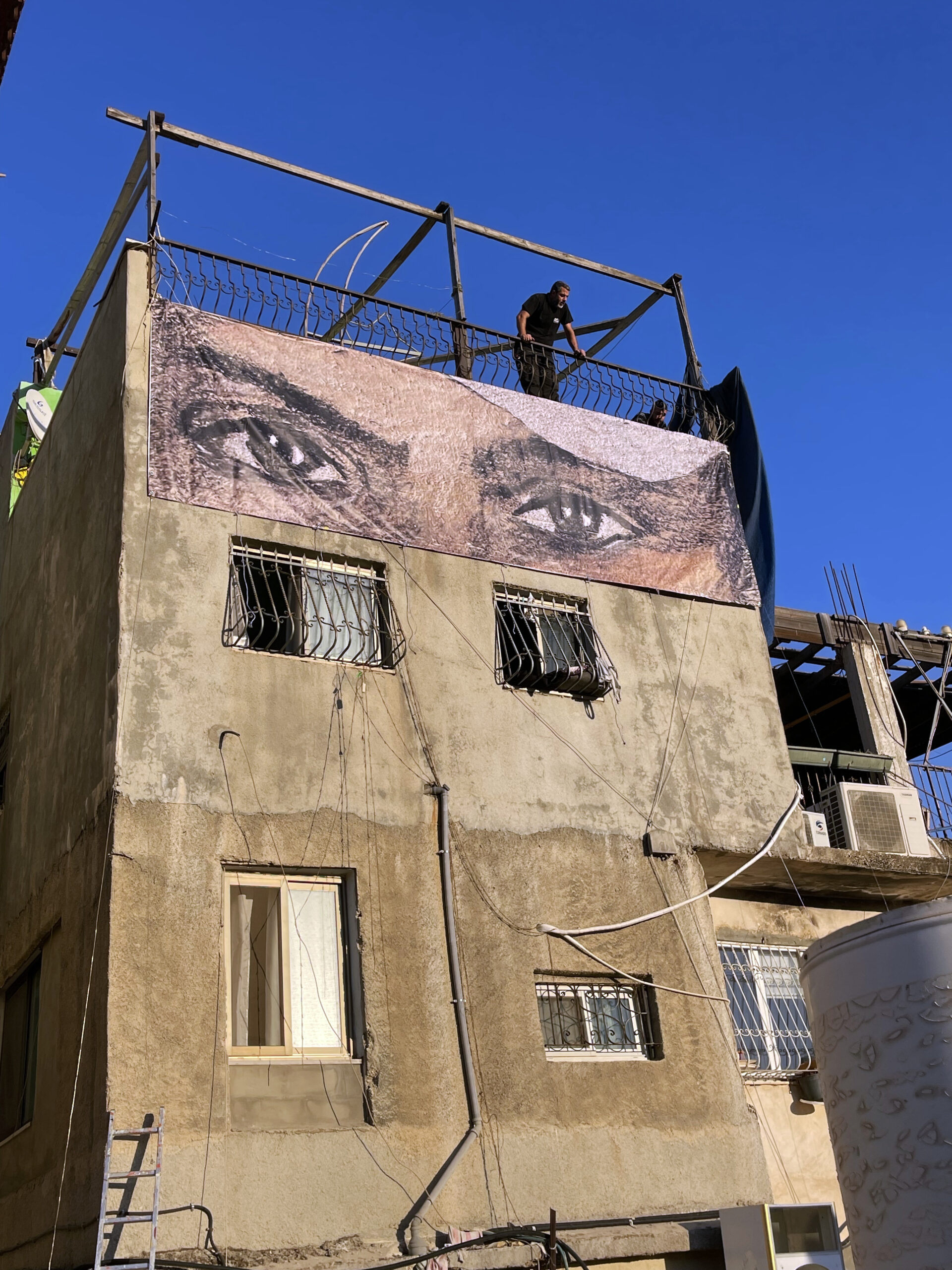
In 2015, Milad Ayyash, fifteen years old, was killed by settlers in Batn al-Hawa, Silwan, occupied Jerusalem. Waad Ayyash, Milad’s sister, said: “The eyes are beautiful symbols on the walls for people to always remember. Milad was someone who wanted to stand up against the occupation, so he was loyal to his land ever since he was a little kid.”
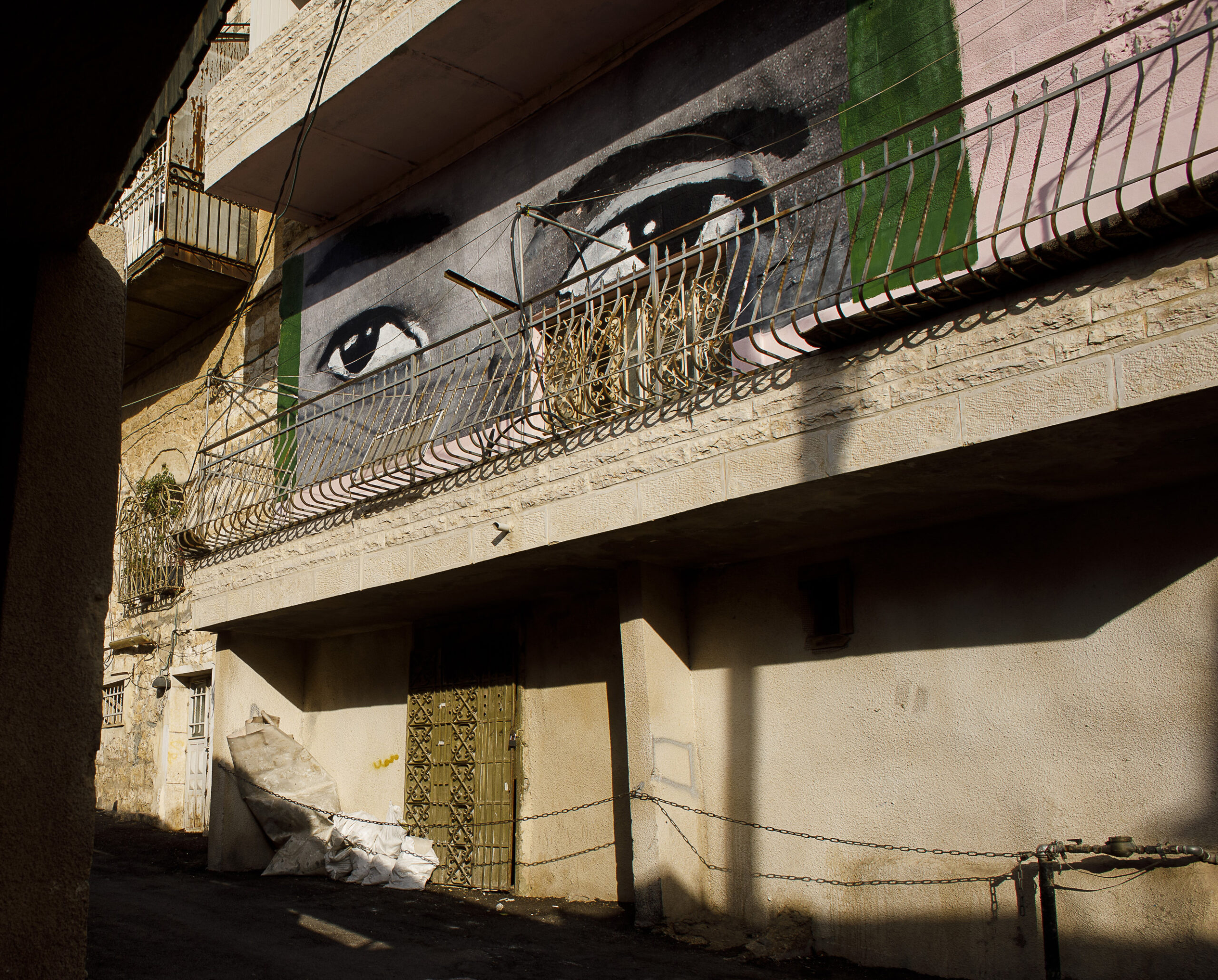
Rachel Corrie, a twenty-three-year-old American activist from Olympia, Washington, was crushed to death by an Israeli bulldozer, in Rafah, Gaza Strip, on March 16, 2003, while engaging in nonviolent direct action to protect the home of a Palestinian family from demolition.
About a month before she was killed, Rachel wrote: “I feel like I’m witnessing the systematic destruction of a people’s ability to survive. It’s horrifying.”

I Witness Silwan and Ayman Al Hossary began to work virtually in June 2023 to install one of Ayman’s pieces in the hills of Silwan. Despite only being an hour away, the work was online due to severe travel restrictions placed on Palestinians. Ayman has never been allowed to visit Jerusalem.

Ayman Al Hossary stated: “Sometimes in the midst of the darkness and the death that we live in, there are some touches that give you happiness and life. [Like] when I see my mural in Jerusalem, next to Al Aqsa Mosque in Silwan. For me, I feel like this is not just an art mural, it is an honor mural. I truly cherish that it is there and I hope that I can go there and do more murals and to participate with the people there because we are all one. We are all one body and we are all subjected to the same violence and torture. It is true that Gaza has been the focus of this violence, but we all get hurt in one way or another.”
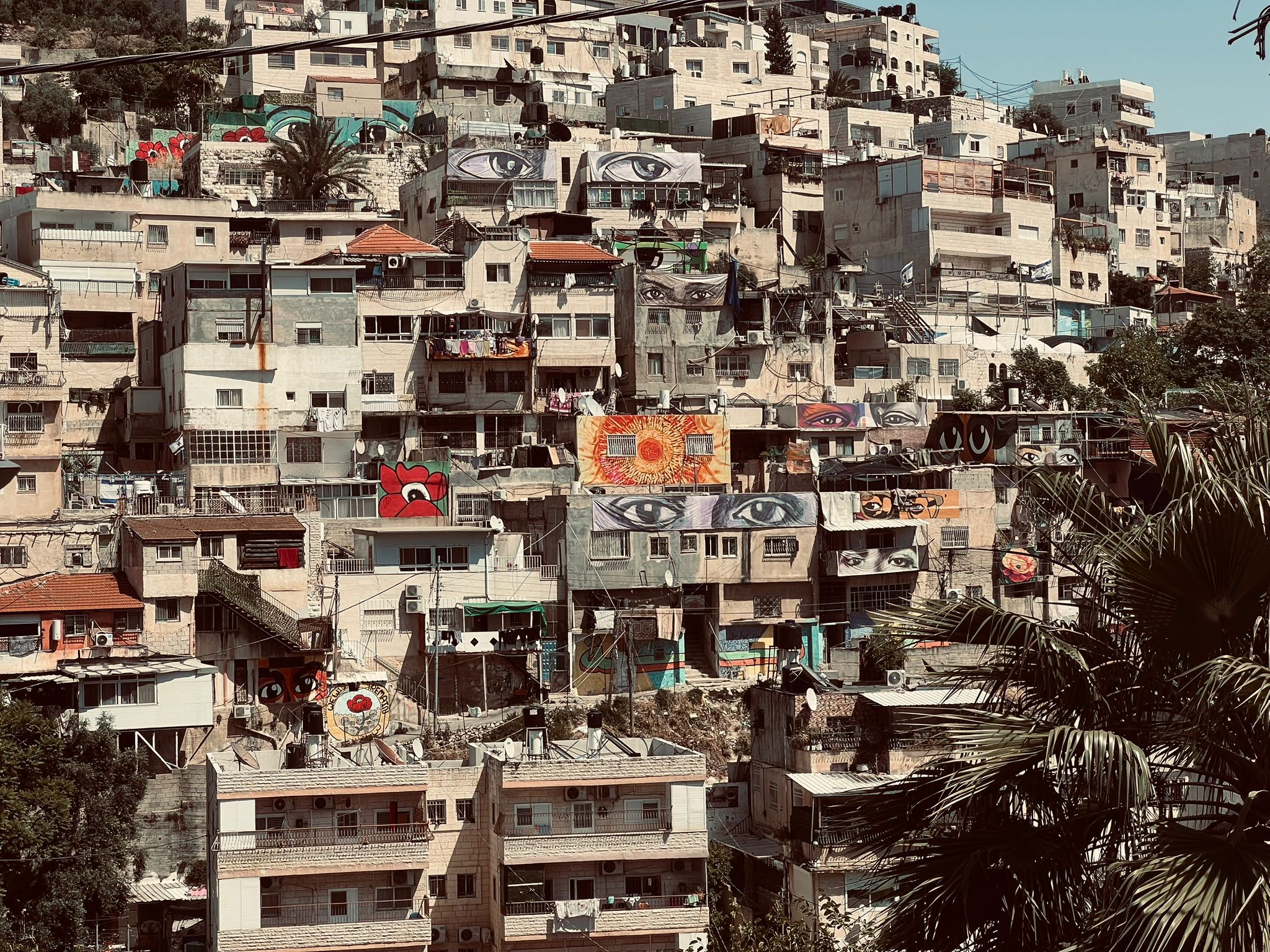

Ayman and his family have been displaced several times during this period of genocide. He is painting on the tents of the displaced people in Rafah.
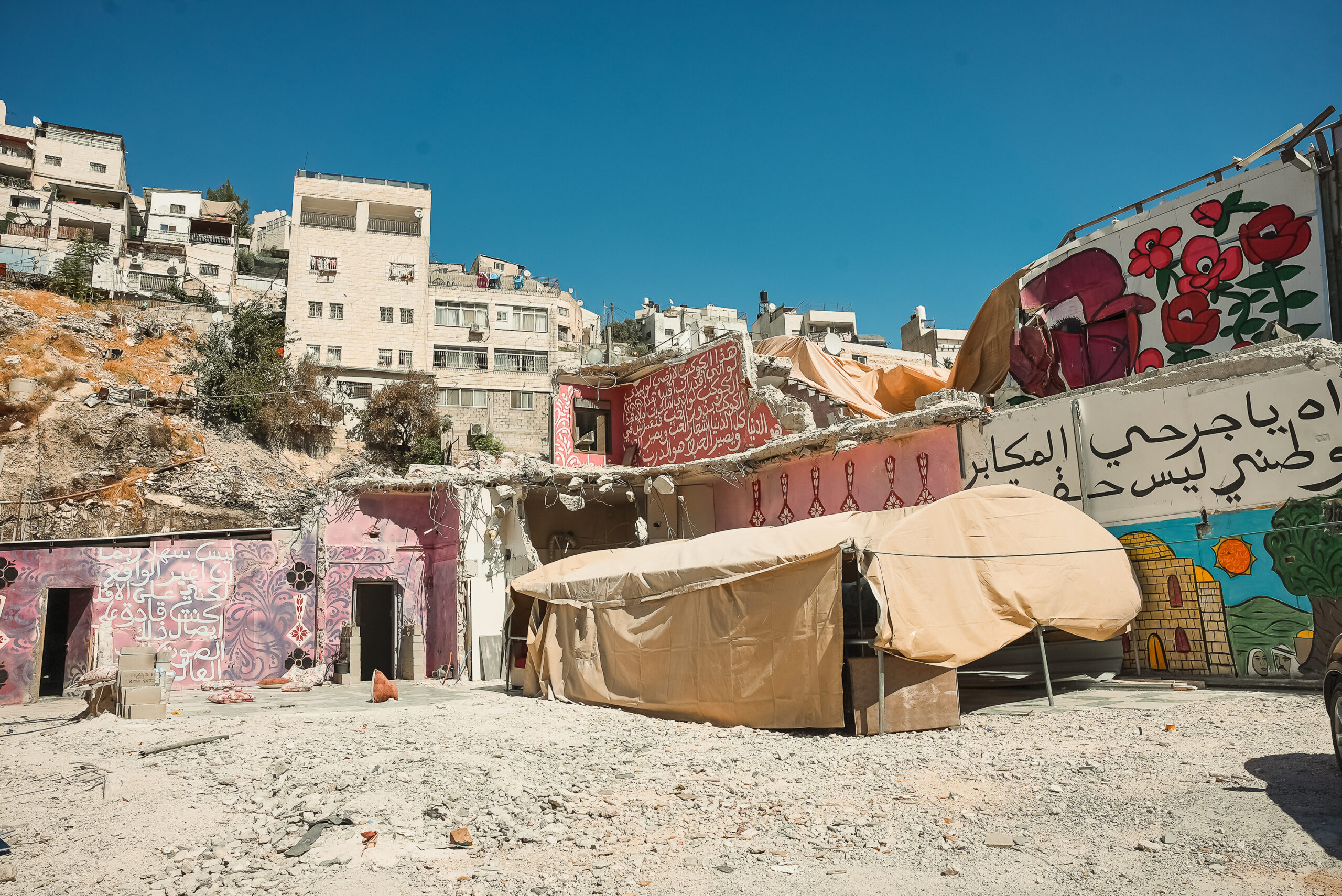
Forty members of the Rajabi family lived in a four-unit apartment building in in Ein al-Loza, which also housed a medical clinic on the ground level. In 2022 the occupying forces demolished three of the apartments and the clinic, leaving one apartment intact.
Poetry translation:
This Earth
If it were in my hands
If I were able to flip this world
If I possessed the ability
To saturate this world
With Seeds of Love
So All this world is filled
With trees of Love
So Love becomes the world
So Love becomes the way
—Fadwa Tuqan
My Home is not a suitcase, and I am no traveler.
—Mahmoud Darwish

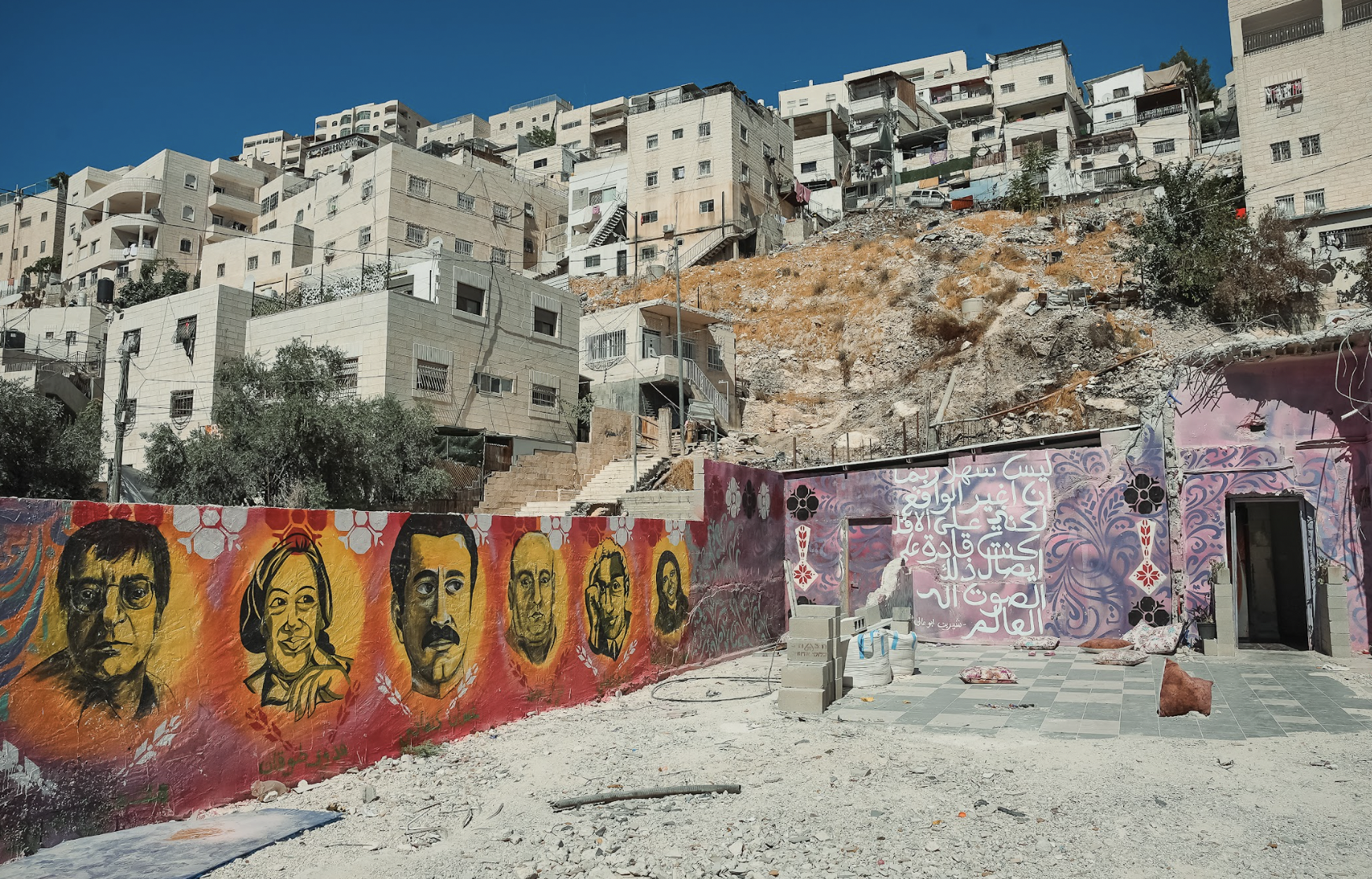
Text translation:
“I choose journalism to be close to people. It may not be easy to change the reality but at least I was able to make that voice heard by the world.”
—Shireen Abu Akleh
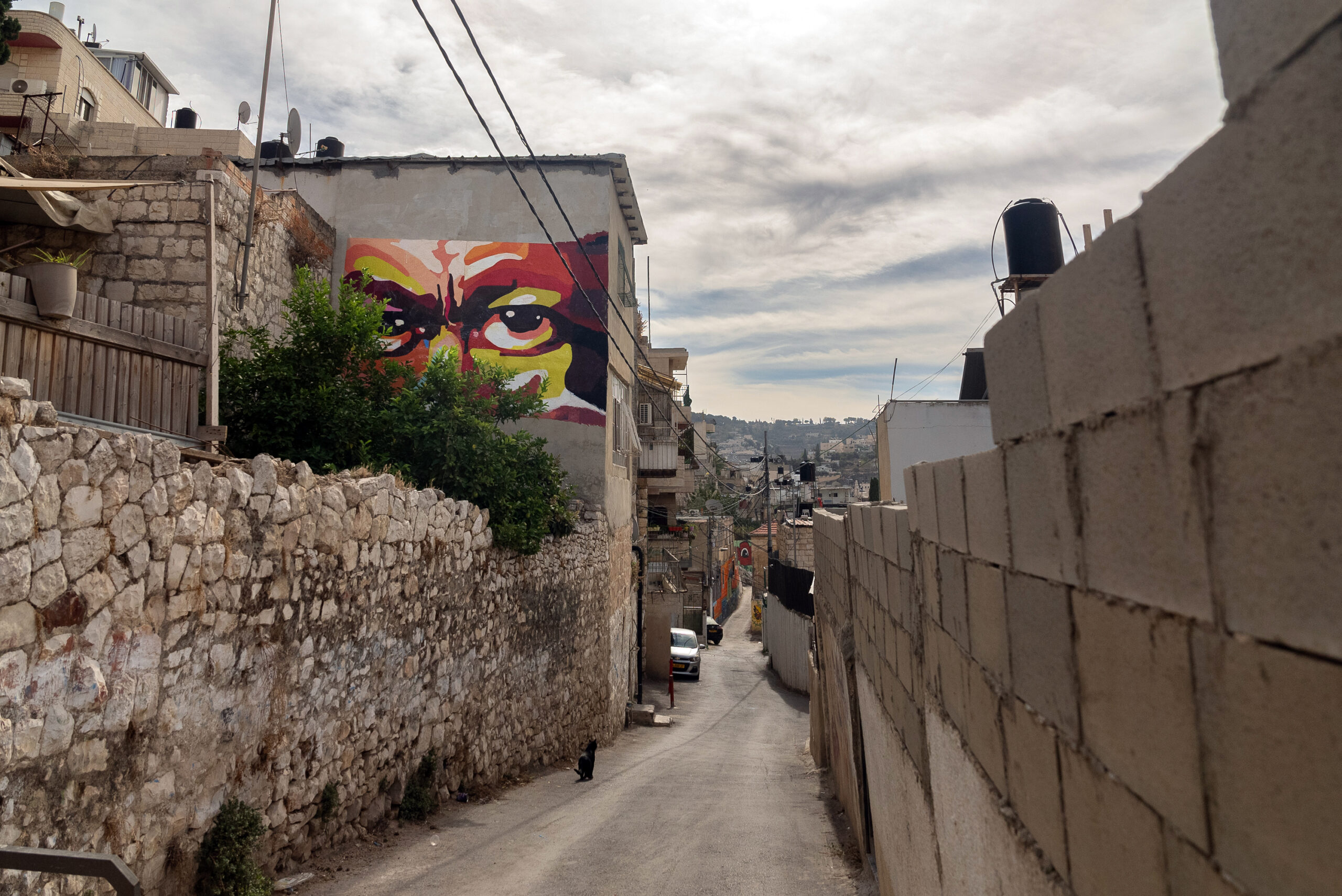
Edward Said, in his last work, Freud and the Non-European (2003), elaborates a vision of identity that is never whole or fixed, but contains foreign elements at its core. Said writes, “The complex layers of the past . . . have been eliminated by Israel.”
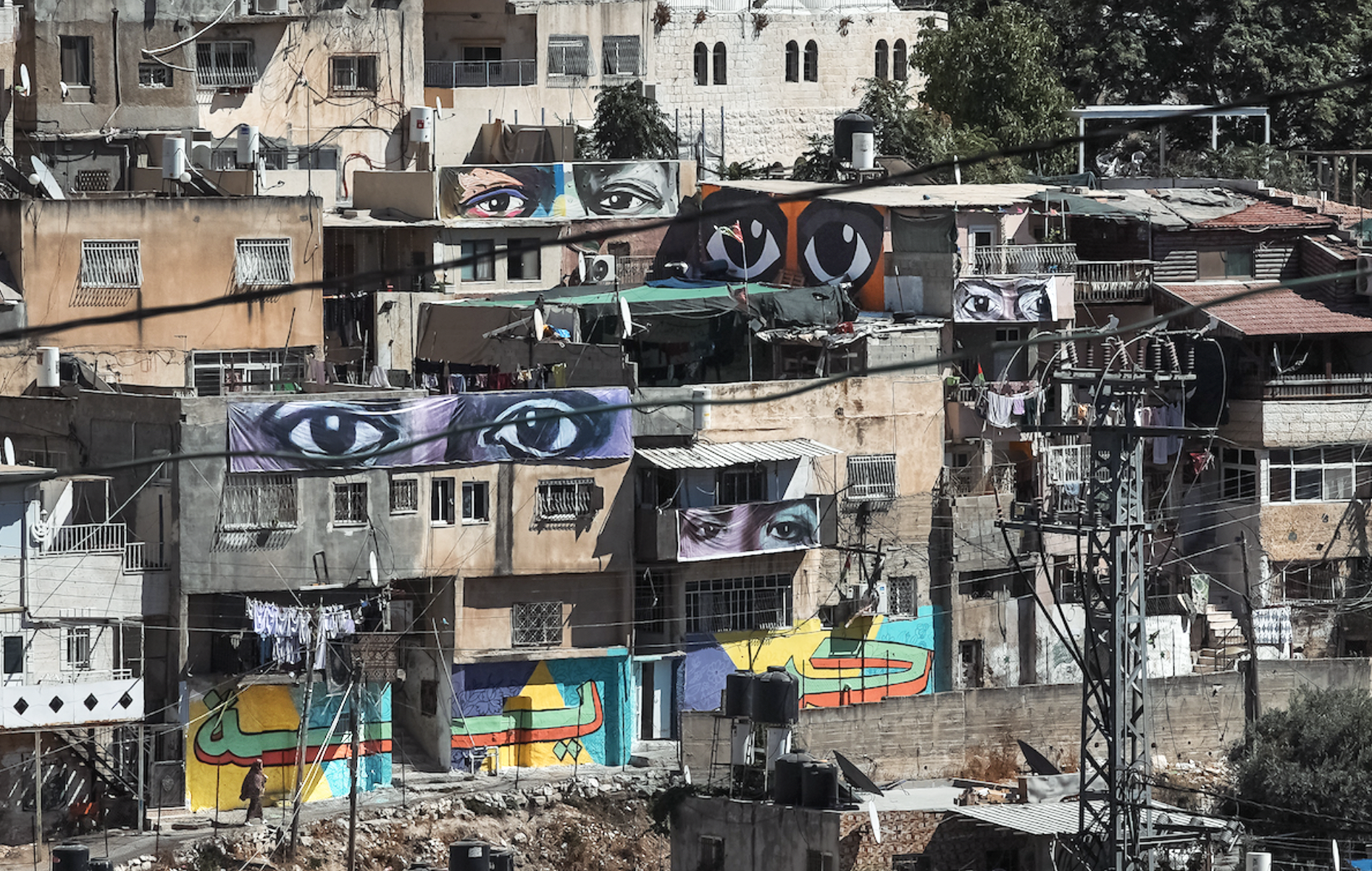
Youth of Batn al-Hawa painted the word “Hurriyah”—”freedom” in Arabic.
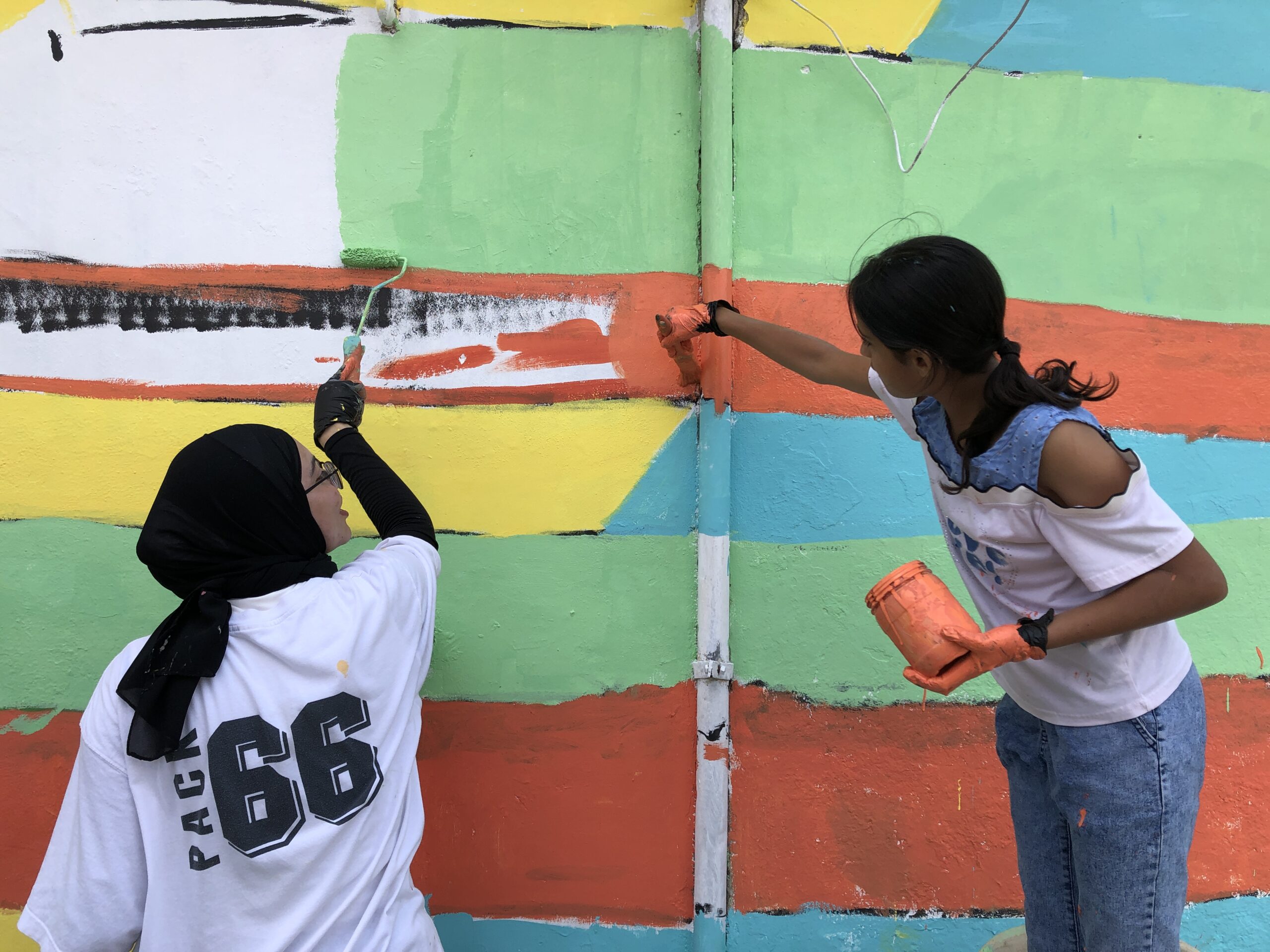
“When I grow up I want to a lawyer to defend my people.”
—Sara, age 14

“The neighborhood is full of our colors now. It is our place. We will never leave.”
—Salma, age 15
For more information about Jerusalem and I Witness Silwan, visit Iwitnesssilwan.org.
I Witness Silwan is a project of US-based Art Forces and Palestine-based Madaa Creative Center. The Madaa Creative Center’s mission is to build a safe, creative, and human rights−oriented space for the community. Art Forces’ mission is to create community public art and media in resistance to militarism, environmental injustice, and colonialism.
- Susan Greene is an interdisciplinary artist and clinical psychologist. Her practice traverses cultural arenas, including video, new media, public art, and murals. Her work focuses on the psychologies of space, intersections of trauma, creativity, memory, resilience, and resistance. Sites of her fifty-plus public art installations span Occupied Palestine’s West Bank and Gaza, refugee camps in Lebanon, the San Francisco Bay Area in California, and Olympia, Washington, where she directs the Olympia-Rafah Solidarity Mural Project. In 2001, Greene founded Art Forces, an international art, activism, and research project. Greene holds an MA in Interdisciplinary Arts from San Francisco State University and an MA and PhD in Clinical Psychology from the Wright Institute, Berkeley, California. Susan Greene has a private psychology practice in the San Francisco Bay Area and is a Palestinian American Research Center and Fulbright fellow.
- Email: susan.r.greene@gmail.com
ROOM is entirely dependent upon reader support. Please consider helping ROOM today with a tax-deductible donation. Any amount is deeply appreciated. |





